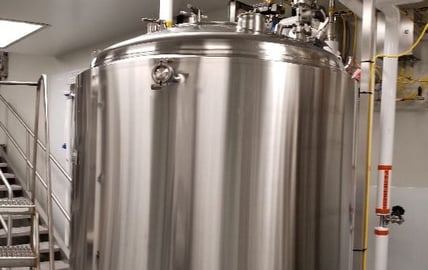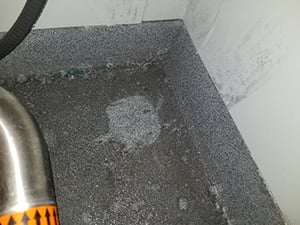To remediate the GMP space, the company contacted Triumvirate Environmental. As part of our initial assessment, we discovered that the chromium-contaminated dust was prevalent on isolated surfaces such as the tops of door frames, the tops of wall-mounted frames, under equipment, and on difficult-to-reach equipment. Our engineering team collected 17 surface wipe samples for chromium analysis before beginning onsite decontamination activities. Total chromium surface wipe concentrations ranged from 0.865 to 11,200 micrograms per 100 cm2 (µg/100cm2). Based on the results, a background concentration of 1 µg/100cm2 was determined. In addition to surface wipe samples, we collected air samples to assess total chromium and hexavalent chromium exposure.
Following the assessment, we collaborated with the company to prepare a work plan, and our field services team mobilized to the facility. The team initiated a metals decontamination cleaning, taking care to avoid any tracking or migration of the contamination. The work included HEPA vacuums, lint-free towels, and swabs for difficult-to-reach areas. The team’s decontamination work progressed into exhaust and HVAC ductwork to ensure all areas of potential chromium dust migration were cleaned.
To monitor and track progress and ensure thorough cleaning, we collected surface samples and ran them for laboratory analysis. Additionally, the team conducted personnel exposure monitoring throughout the course of the work. We confirmed the release of the cleaned areas to the company without restriction or hazards to employees.







